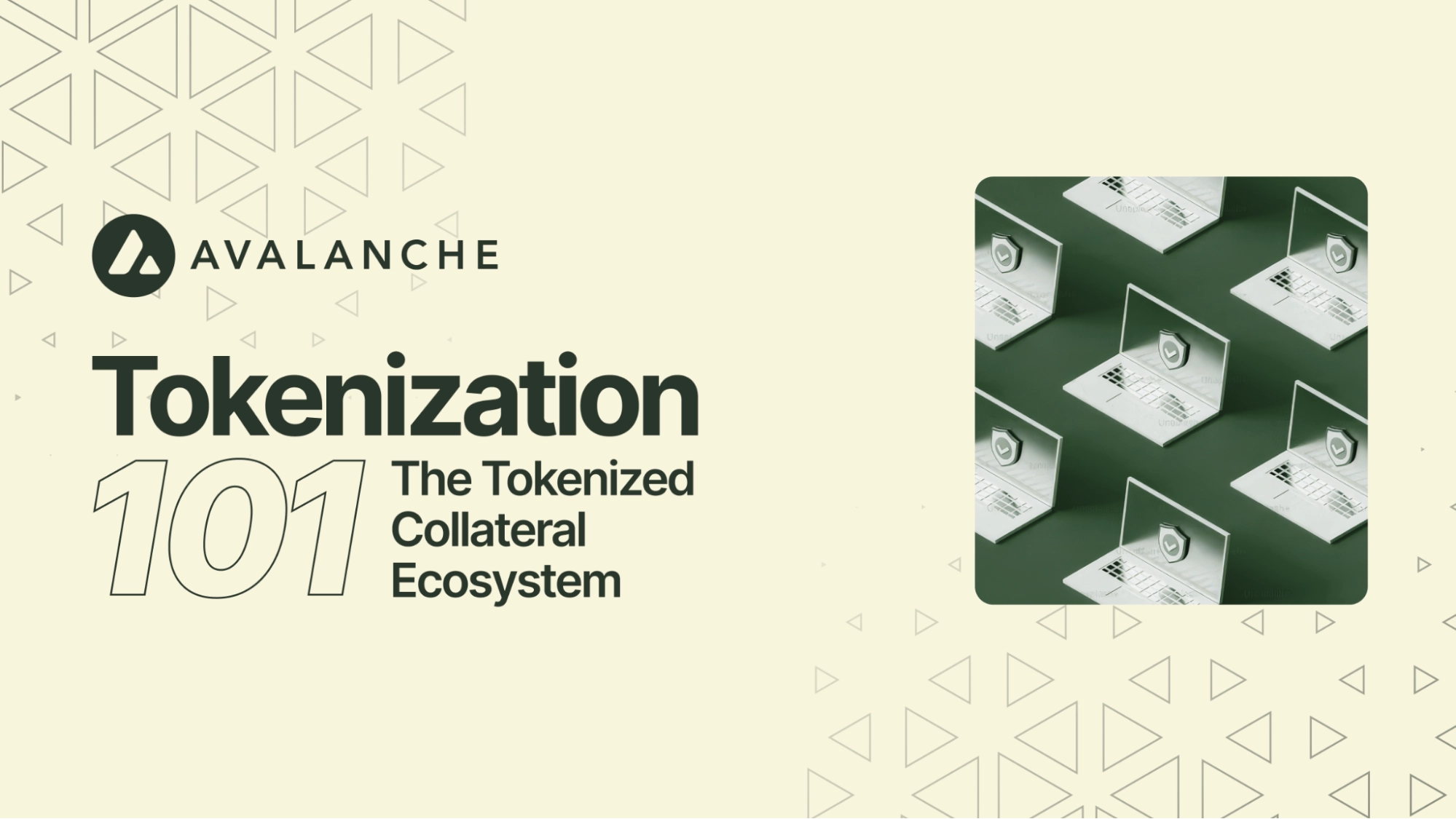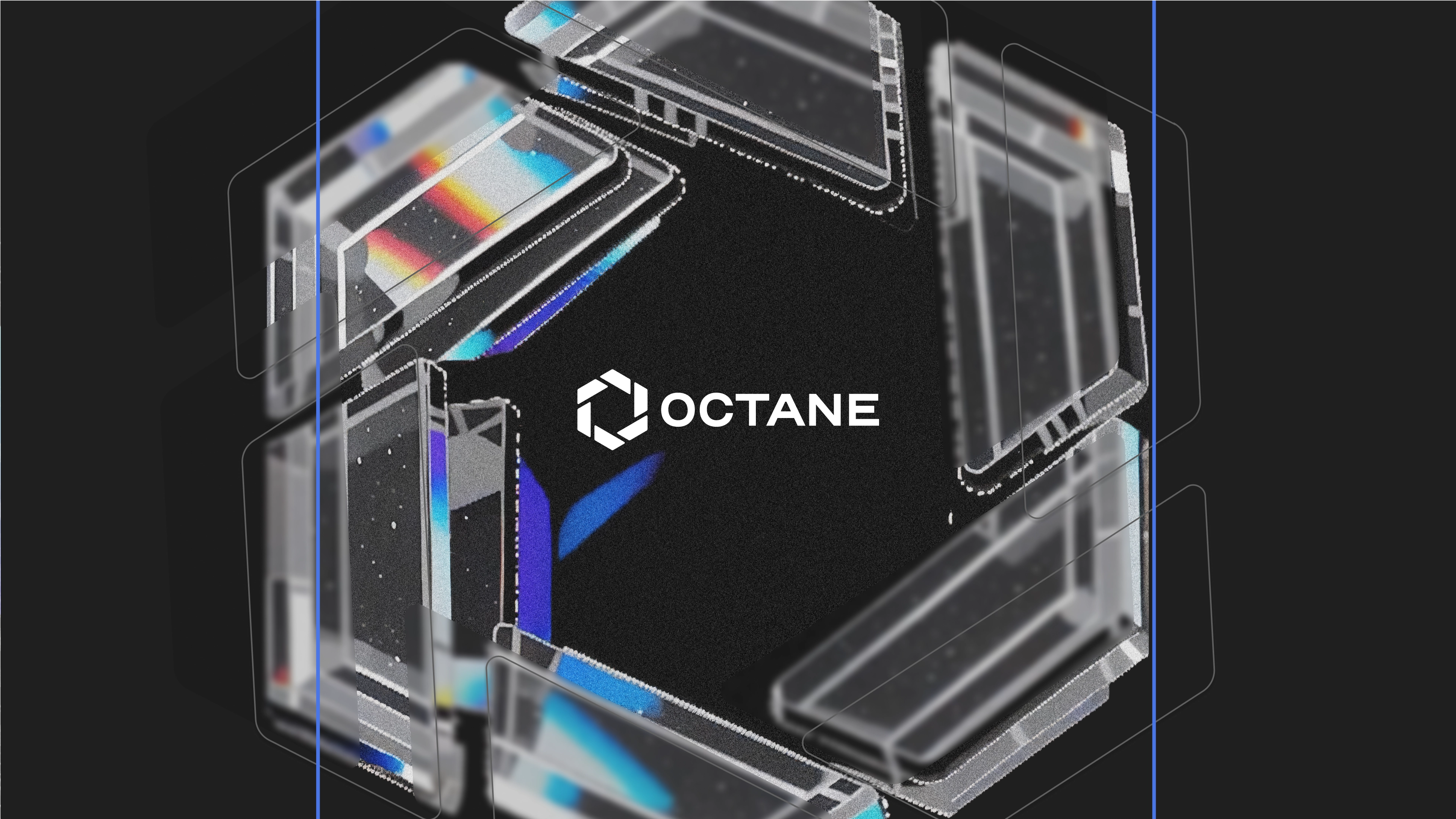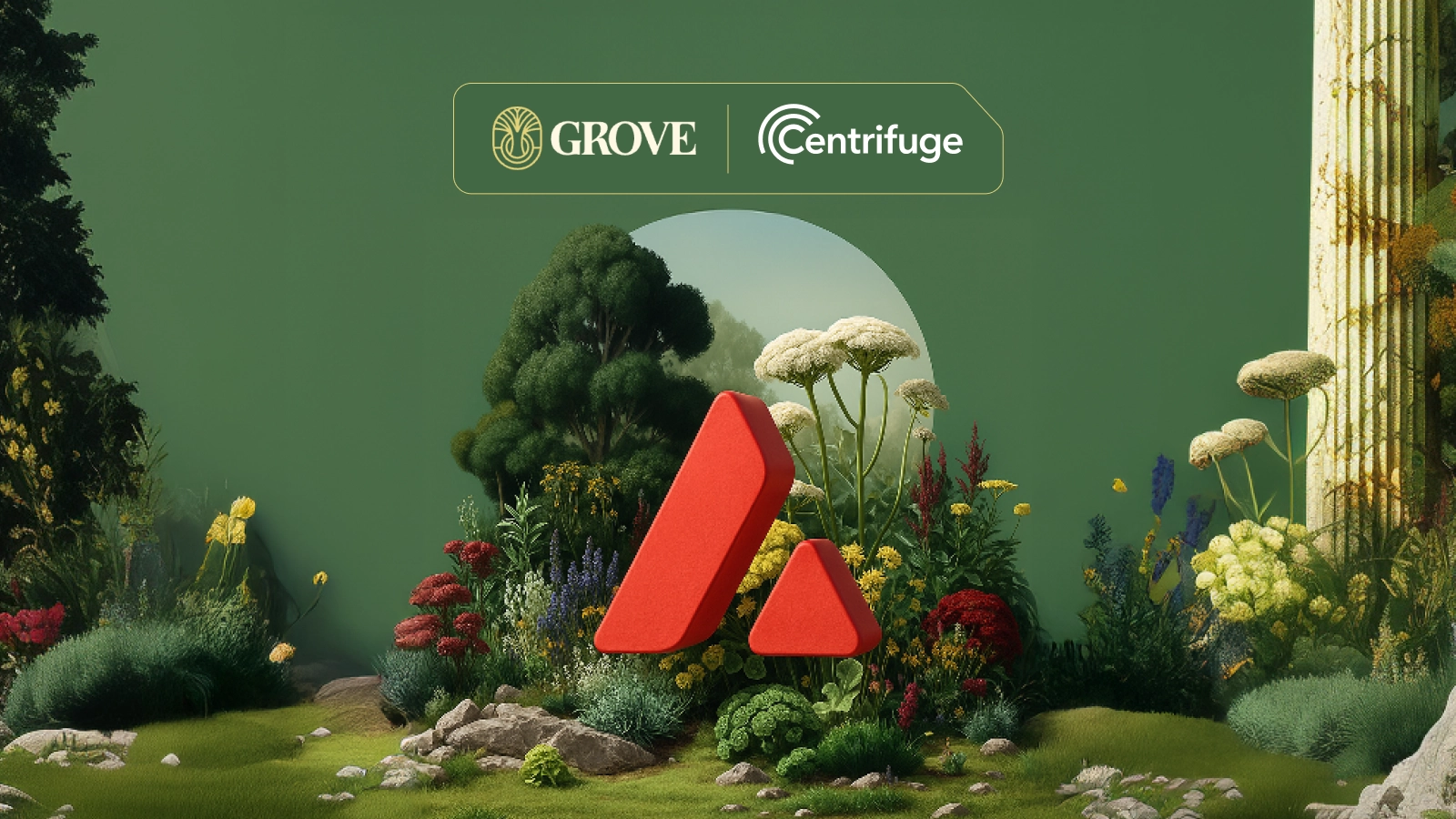Tokenization 101: The Tokenized Collateral Ecosystem
Tokenization 101: The Tokenized Collateral Ecosystem
Mar 28, 2024 / By Avalanche / 5 Minute Read

Institutions explore tokenization and smart contracts for expanding collateral use and productivity
Imagine a world where assets, from stocks in a portfolio to the painting hanging in your living room, could be turned into powerful tools for securing a loan or making an investment. What could make this possible? The answer: tokenized collateral.
Collateral is a cornerstone of financial markets and the global economy, a means of managing risk and achieving greater capital efficiency. Today, many institutions are exploring how new and emerging technologies like tokenization and smart contracts can expand and innovate collateral utilization and productivity. The result: a tokenized collateral landscape is emerging.
Avalanche's Subnet architecture, especially Evergreen Subnets, provides an ideal platform for asset tokenization, one with flexibility to meet institutional needs and customization for specific industry requirements. Let’s map the possibilities.
Onyx Was First. What's Next?
Finance leaders like BlackRock CEO Larry Fink and J.P. Morgan's Tyrone Lobban champion asset tokenization as a transformative force for markets, one that can enhance liquidity and reduce operational costs.
Onyx by J.P. Morgan used its blockchain-based Tokenized Collateral Network (TCN) for a transaction where BlackRock tokenized money market fund (MMF) shares. The tokenized asset was used as collateral for a trade with Barclays, showing the potential of blockchain to simplify and speed up financial transactions.
Moving the process on-chain allows collateral to auto-liquidate, efficiently meeting margin calls and lowering transaction costs. Financial institutions can pledge liquid assets as collateral, potentially enhancing portfolio productivity.
By leveraging an Evergreen Subnet, financial institutions can access built-in and further customizable features, including EVM compatibility, permissioning at the validation, smart contract deployment, and transaction levels, as well as network privacy and custom gas features.
How the Lending System Currently Works
Securitization is a technique for converting an illiquid asset or group of assets into an investable security. Currently, lending against illiquid assets is a complex process requiring precise attention to detail, legal expertise, and coordination.
Initially, the lender issues a loan commitment letter with the loan's terms, which becomes binding once the borrower signs it and pays a commitment fee.
Both parties outline the loan details, compile a checklist for due diligence, and prepare legal documents for closure.
Closing involves heavy coordination to obtain all signatures, disbursing funds, and addressing any post-closing matters.
Illiquid Assets
Tokenizing illiquid assets like real estate and fine art may significantly enhance their utility as collateral in financial markets. These assets, often bypassed due to their complexity and the costly valuation process, may become more accessible and liquid once on-chain. This shift transforms hard-to-use assets into potentially valuable collateral options.
On-Chain Efficiencies
On-chain collateral management may enhance efficiency by embedding ownership and market value data directly into tokens. For example, when establishing a collateralized loan in token form, relevant data, such as ownership details and current market value, can be embedded on-chain to monitor the collateral’s loan-to-value ratio. Furthermore, oracle-enabled data feeds may be used to update any relevant underwriting data in the token so that only the most relevant up-to-date information is shown for parties underwriting the collateral.
Embedding all relevant data and documents within a token can shorten the traditional underwriting process from weeks to seconds, facilitating faster legal custodianship changes and improving the utility of assets as collateral.
Collateral tokenization offers potential benefits for banks and their clients, including the ability for a data-based oracle to update relevant information within the collateral token. This enables the creation of a secondary market for collateral tokens, providing a way to manage previously illiquid assets more effectively. The process also improves trust by allowing for quick updates and transfers of legal custodianship and documentation, which simplifies procedures and improves the transparency and reliability of custodial and documentation practices.
Looking into Further Use-Cases.
Tokenized collateral may significantly speed up settlements and foster secondary markets, especially for traditionally illiquid assets like commercial real estate (CRE) and fine arts. CRE loans, usually hindered by a lengthy liquidation or loan security process requiring up to 45 days, may benefit from tokenization that summarizes all necessary information, reducing the processing time to seconds.
Concrete Numbers
Intain's $5.5 billion on-chain finance platform showcases how tokenization significantly boosts efficiency and cuts costs across various asset classes. For example, tokenization of CRE investments can lower the entry threshold from $1 million to $100,000 or less, enhancing liquidity by tenfold. It can also reduce transaction fees from 2-5% to 1.5%, saving up to $150,000 on a $10 million property. Smart contracts may further reduce administrative and legislative costs by 20-30% and shorten the time for sales and refinancing from days or months to hours, which is particularly beneficial for meeting margin calls.
Similarly, tokenization opens up a larger market for fixed-income securities and equities, potentially increasing its size by about 30%. Tokenizing home equity credit lines (HELOC) and art could transform illiquid assets into more tradeable forms, potentially boosting trade volumes by 25% for HELOC and 50% for art, thereby possibly increasing platform transaction fee revenues. This approach would enable fractional ownership, diversify portfolios, and accelerate asset liquidation.
Attributions
Special thanks to NYU Blockchain and Fintech for research and collaboration on this article.
Co-authors:
Nathaniel Fossella
Apoorva Deshmukh
Krish Sharma
Scott Noh
Smit Bajaj
Provided for informational purposes only, without representation, warranty, or guarantee of any kind. None of this is as an endorsement by Ava Labs, Inc., the Avalanche Foundation Limited, or any of their respective subsidiaries or affiliates, nor is any of this investment or financial advice. Please review this Notice and conduct your research to properly evaluate the risks and benefits of any project.
About Avalanche
Avalanche is a smart contracts platform that scales infinitely and regularly finalizes transactions in less than one second. Its novel consensus protocol, Subnet infrastructure, and HyperSDK toolkit enable Web3 developers to easily launch powerful, custom blockchain solutions. Build anything you want, any way you want, on the eco-friendly blockchain designed for Web3 devs.
Website | Whitepapers | Twitter | Discord | GitHub | Documentation | Telegram | Facebook | LinkedIn | Reddit | YouTube




